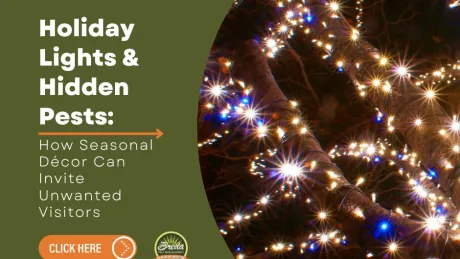Moths are closely related to butterflies but are viewed as a nuisance because of their lack of beauty and habit of following people inside. Beyond that, few people know much about moths or what they do. With over 11,000 different species in the US alone, Breda Pest Management is here to shed a little bit of insight on this particular insect.
What Do Moths Do?
Moths are primarily nocturnal and search for food at night. Moths have a similar life cycle as butterflies. They start their lives as caterpillars before forming a cocoon and turning into an adult moth with the ability to fly. One of the biggest contributions of moths is that their discarded cocoons are used to make silk. Moths are also very important pollinators. Because they have hairy bodies, they pick up pollen on any flower that they land on. Moths are also an invaluable part of the food chain, serving as a source of food for a wide variety of animals. Not only do animals eat moths, but their early caterpiallar form is fair game too. These flying insects are also masters of disguise. Some species of moths have evolved to look like predators such as wasps while others can easily blend in with their natural surroundings. Moths also have one of the longest lifespans of insects. Certain moth species can live up to three years if they escape being eaten by predators.
Why Are Moths So Attracted to Light?
Moths evolved to navigate by light. In nature, the position of the sun and stars stays relatively constant and moths are able to tell the direction they're flying in by keeping a constant angle to the sun or stars. When moths fly near artificial lights, the angle of the light quickly changes as they fly, and they end up moving towards the light as they try to stay on a straight path.
Are Moths Harmful?
Moths feed primarily on keratin, a protein found in human and animal tissues such as hair, fingernails, and skin. Luckily, they feed on dead particles that have naturally fallen off. In fact, the way a moth's mouth is designed makes them incapable of piercing a person's skin. The only harm they can cause is from being annoying.
How to Safely Get Rid of Moths
The easiest way to get rid of moths is to keep them out in the first place. Seal any gaps in your home and install screens in windows or doors you like to keep open at night. To keep them from following you through a door, keep a porch light on outside and turn interior lights near the door off before you open it — moths only try to fly inside when there's more light inside than outside. Moths that do get inside can be killed with a fly swatter and won't survive more than a few days if left alone. If you have a persistent moth problem after taking these steps, it could be a sign of a larger issue. Breda Pest Management is here to assist you with any of your pest needs.



